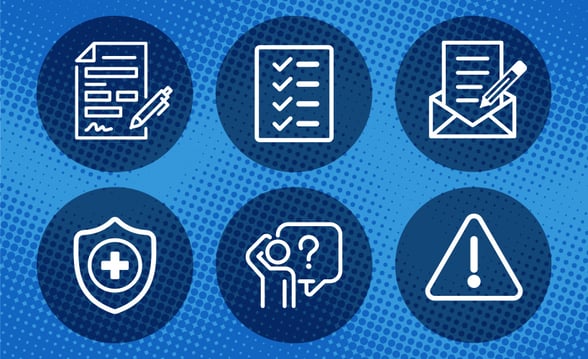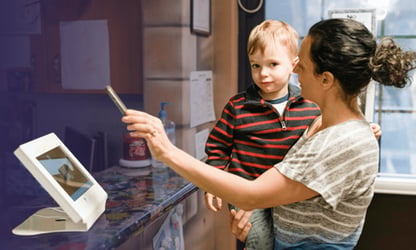
When it comes to afterschool programs, the demand keeps growing. A 2022 study reveals that 24.7 million children are not enrolled in afterschool programs but would be if there were available programs. Parents agree that afterschool programs keep kids out of trouble, help them build positive relationships with adults and promote youth development and mentoring. They also make parents feel confident their kids are well supervised and help them keep their jobs.
Considering all the factors, setting up an afterschool program can be lucrative and rewarding. The question is, how can you get started? This article explains how to run a successful afterschool program and provides all the information you need to get it off the ground.
Don’t miss out on your chance to download our 100+ templates, marketing guide, automation tips, and checklists for efficient daycare and preschool management.
Table of Contents
- What Is an Afterschool Program?
- Benefits of Afterschool Programs
- How to Start an Afterschool Program
- Best Afterschool Activities for Engagement
- Budgeting and Funding an Afterschool Program
- Marketing and Enrolling Students in Your Afterschool Program
- How Vanco Supports Afterschool Programs
- FAQs
- 100+ Free Afterschool Program Templates to Save Time & Money
What Is an Afterschool Program?
As the name suggests, an afterschool program takes place after school hours, typically from 3 p.m. to 6 p.m., although hours vary. The primary purpose is to help working parents; however, these programs also provide youth development and mentoring. Program administrators care for children and encourage them to participate in after-school activities to achieve developmental goals.
There are various afterschool programs to choose from, including Science, Technology, Engineering and Mathematics (STEM) and arts in afterschool learning, to ensure children get a well-rounded experience. Some of the best afterschool curriculum ideas include:
- Academic: Encourage students to dig deeper into math, English, science, history or language studies
- Recreational: Support socialization and may include sports activities
- Arts-based: May teach children to create art, like sculptures and paintings, or learn theater, dance or music
- STEM: Offer a multidisciplinary approach to hands-on learning
Afterschool programs also benefit child development by helping them improve social skills and providing academic support. As a result, children often grow more confident in their interactions.
Benefits of Afterschool Programs

Afterschool programs offer several benefits to families. They help kids develop emotionally and academically while creating a safe space for students after school. Keep reading to learn about other advantages.
Academic Support and Homework Assistance
Some community-based afterschool initiatives help kids explore their areas of interest and provide homework help. This type of engagement can lead to better learning outcomes. Research on the impact of afterschool and summer programs reveals these statistics:
- A 2022 evaluation of Delaware’s 21st Century Community Learning Centers (CCLC) found that 8 in 10 high school students felt more connected to their school after attending an afterschool program.
- 9 in 10 parents said their children showed more interest in school due to afterschool program attendance.
- An evaluation of North Dakota’s 21st CCLC programs found that 8 in 10 students liked school better after attending an afterschool program.
- 7 in 10 parents said participation in an afterschool program improved their child’s attitude toward school.
- Numerous studies showed after-school programs improved children’s engagement in learning.
Afterschool programs also encourage kids to study together so they enjoy the learning experience.
Social and Emotional Growth
Afterschool programs benefit a child’s social and emotional development in the several ways:
- Promote a sense of belonging: Afterschool programs allow kids to form deeper bonds with existing friends or make new friends.
- Improve social skills: The programs encourage children to develop social skills that can be valuable later in life.
- Build confidence: Afterschool programs offer a safe space to learn and grow. Without the restrictions of conventional school, children often develop confidence and become more willing to take positive risks.
- Boost well-being: In a survey of registered voters, 84% and 89% of parents agreed that afterschool programs support children’s social and emotional well-being.
- Provide youth development and mentoring: Students may form valuable relationships with the program's adults, putting them in mentor-type roles. They will help children develop useful social skills that support emotional growth.
Structured, Safe Environment
Many families are grateful that afterschool programs provide a safe, structured environment that kids can enjoy while their parents work. These programs are essential for at-risk youth who may otherwise engage in dangerous activities.
According to a 2015 study, 73% of parents and 83% of participants agree that afterschool programs “can reduce the likelihood that youth will engage in risky behaviors, such as commit a crime or use drugs or become a teen parent.”
Exposure to New Interests and Skills
Afterschool programs also help students discover new interests and skills. With various programs to choose from, such as STEM and arts in afterschool learning, children can explore different experiences and avenues they are not familiar with. They also develop valuable life and social skills that will stick with them over the long term.
How to Start an Afterschool Program
Starting an afterschool program makes sense, considering the benefits of afterschool care and the high demand. But how do you get started? Here are some steps to guide you on how to run a successful afterschool program.
Research and Planning
The first step in setting up an afterschool program involves finding your target audience. Determine:
- Age groups: What age groups need afterschool programs most? This information will help you determine who to market to.
- Community needs: Consider community needs in terms of when they need afterschool care and identify convenient locations.
- Program development: Your research should also help you determine which types of programs will interest children and parents.
Setting up afterschool programs can take months and there’s no need to rush it. Figure out a timeline that gives you the space to present a well-developed program while keeping you on track.
Choosing a Location
There are several locations to choose from when opening an afterschool program. Here are some standard options:
- Schools: Schools may be the ideal location because the children are already at school when your program starts. Parents won’t need to take time off work to transport their children from one location to another, making them a convenient choice. Additionally, schools are unlikely to charge you for using their space. They may even support your endeavors. For example, the California Department of Education offers grants to people who start afterschool programs.
- Community centers: Community centers may charge you to open an afterschool program at their location, but expenses will be lower than opening an independent space. Kids may need to commute, but they can likely walk if you choose a facility close to schools. Parents may be familiar with the center and feel confident knowing their children are in a safe environment.
- Independent spaces: Opening an independent space may be the riskiest move, considering various expenses and a possible lack of familiarity. However, you can decorate and customize the location to suit your needs. Additionally, many afterschool programs rely on grants and donations that can reduce some of the costs.
When choosing a location, consider factors like:
- Safety: Ensure there are emergency exits and a safe space for play.
- Space: The location should have enough space for extracurricular activities for students, storage and quiet study.
- Amenities: Amenities may include a kitchen if you plan to serve meals, WiFi and child-appropriate furnishings and fixtures.
Developing an Afterschool Program Curriculum
As previously mentioned, there are various curriculums to choose from when developing your afterschool programs, including recreational, academic, STEM and arts in after-school learning and so on. Many programs offer educational and recreational activities to promote understanding and enjoyment. Here are some approaches that can help you determine which is best for your program:
- Ask the community: Take to the streets, do internet research and conduct surveys to discover the best afterschool curriculum ideas for what people most want to see in an afterschool program.
- Offer different programs: You may start your afterschool program by offering a general curriculum, then develop it based on student requests and demand. Study your students’ interests and integrate specialized programs to suit their needs.
- Mix it up: Offer a combination of recreational and learning extracurricular activities for students to ensure there’s something for everyone.
- Determine scheduling: When will your program take place? Will it be strictly after school, or will you provide services in the summer? Once you decide, plan daily seasonal programs, making time for snacks, meals and transitions.
Hiring Qualified Staff and Volunteers
When it comes to personnel, define the necessary roles and responsibilities. Consider these factors:
- Number of children: How many children will attend your program? It’s best to have a good staff-to-child ratio (typically 1:10 to 1:15 for school-aged children, depending on activities).
- Classes you offer: If you are considering offering specialized classes, you will require trained professionals to lead them.
- Other staff members: You may require other staff members beyond those interacting directly with the children, including administrative staff, janitorial staff and so on. Identify a program director/coordinator with strong organizational and youth leadership skills to manage operations, communicate with parents, develop preschool management techniques and oversee the afterschool program curriculum if possible.
Once you know the roles you will be hiring for, you can begin scouting for talented individuals. You may also save money by hiring volunteers who are grateful for the learning experience.
Because staff members interact with children, you may hold them to higher safety standards than when hiring for another type of firm. Here are some to be aware of:
- CPR/first aid: Consider requiring staff to undergo CPR and first aid training.
- Background checks: Conduct background checks to ensure you maintain a safe environment for your children.
- Unique skills: Although not necessary for every staff member, you may require those who oversee classes to have specialized training in childcare and teaching.
- Vaccinations: You may require your staff to get certain vaccinations to avoid spreading diseases.
Licensing, Regulations and Safety Requirements
Your afterschool program must also meet licensing and safety requirements that can vary from state to state. Most states have requirements regarding background checks, staff-to-child ratios and safety protocols. Be aware of these compliance guidelines:
- Business plan: Your business plan should outline your mission, goals, target audience, vision, activities, budget, marketing strategies, policies, protocols and organizational structure.
- Safe location: Ensure your location offers safety features like a fenced-in yard, reliable play equipment, secure electrical outlets and fire exits and is inclusive for parents and students of all abilities.
- Staff qualifications: Staff members should be qualified, licensed and have background checks. They should have the appropriate health and safety training. Maintain a required staff-to-child ratio.
- Curriculum and activities: Choose extracurricular activities for students that align with your program’s goals and community needs.
- Licensing and regulations: Acquire the necessary permits and licenses to operate an afterschool program in your community. The state may also require you to maintain staff information, attendance records and immunization records. You may also be required to adhere to food handling and safety regulations. Check with your state’s child care licensing agency to determine what’s needed in your area.
- Communication: Establish clear communication channels with staff and parents to promote transparency.
Best Afterschool Activities for Engagement
When developing your program, find engaging activities that kids will enjoy. The right activities will make them passionate about the program and academics. Here are some of the best afterschool curriculum ideas you can choose from.
STEM and Hands-On Learning Projects
Hands-on learning is ideal for children because it engages them in academics. A Gallup study reveals that students actively involved in their education are 2.5 times more likely to do well in school and 4.5 times more likely to feel hopeful about their future.
Although any hands-on learning activity is beneficial, students are often passionate about STEM, which focuses on robotics, coding and science experiments. Here’s how it works:
- Interdisciplinary approach: STEM breaks down traditional subject boundaries so students can understand how different disciplines relate.
- Hands-on learning: Students engage in activities like coding challenges, science experiments and engineering projects to understand STEM concepts better.
- Problem-solving: STEM education encourages students to identify problems, find solutions and test them to develop their critical thinking and problem-solving skills.
- Real-world applications: STEM connects academic learning to real-world scenarios to make learning more relevant and engaging.
Arts and Creative Expression
Art enrichment programs for kids, such as painting, music, drama, dance, pottery or crafts help kids explore their creative sides. They are crucial for kids because they:
- Help develop motor skills: Kids often use their hands to create art projects, developing motor skills.
- Enhance decision-making: Art helps children be creative, which allows them to think outside the box and enhances their decision-making skills.
- Promote visual learning: Because 65% of people (and children) are visual learners, art may be the best way to teach children.
- Encourage innovation: Art encourages children to explore their creativity and take risks, potentially making them more innovative later in life.
- Enhance cultural awareness: Children who explore art become familiar with different cultures, breeding open-mindedness.
- Improve academic performance: A report by Americans for the Arts reveals that young people who regularly participate in the arts are four times more likely to be recognized for academic achievement.
Physical Activities and Outdoor Play
Some children may look forward to outdoor play after a long day in school. It provides several benefits that go beyond letting go and reducing stress, including:
- Physical health: Physical activity reduces the risk of obesity and related medical conditions. One study revealed that children participating in sports are five to six times more likely to be active as adults, providing long-term benefits.
- Mental health: Exercise, including sports, increases the level of feel-good hormones in the body, reducing stress and benefiting mental health.
- Motor skills: The movement involved in sports develops motor skills that support independence, sensory integration and language development.
- Social skills and teamwork: Sports encourage children to work together to develop strategies promoting teamwork, cooperation and leadership skills.
- Problem-solving: Children develop sports strategies that support problem-solving later in life.
- Academics: Although school athletes are typically not typecast as having the highest IQs, research suggests they have higher test scores, approximately 40% higher.
Physical activities aren’t limited to sports. They include yoga, dance, fitness, martial arts and many others, ensuring everyone can find something they enjoy.
Social and Team-Building Games
Social and team-building games can be included in your curriculum, or they can be the main focus. Common activities include:
- Icebreaker activities: These activities encourage interaction, build rapport and foster comfort and familiarity. Common examples include Two Truths and a Lie, Would You Rather, and Charades.
- Group challenges: Group challenges are any activity that requires a team to work together toward a common goal. They may include sports competitions, trivia games and scavenger hunts.
- Collaborative projects: Divide kids into groups and ask them to complete projects together. Common examples include art projects, homework assignments and even software development.
When kids work together, they learn to communicate and cooperate, develop empathy and understanding, and enhance problem-solving, leadership skills, creativity and innovation.
Community Service and Leadership Opportunities
Your afterschool program may require kids to engage in community service. They may volunteer at a food pantry, collect canned goods for low-income families, raise money for a specific cause, tutor students or clean up local parks or beaches. In addition to developing needed skills, volunteering is a leadership opportunity that can be taken further if kids launch their own community-based afterschool initiatives.
Volunteering benefits kids because it helps them develop empathy and compassion, teaches responsibility and teamwork, builds self-esteem and confidence, expands knowledge and skills and creates lasting memories. A 2023 study linked volunteering with improved health, increased odds of flourishing and decreased behavioral problems in children.
Kids can further develop their skills through student council programs, speaking workshops, organizing neighborhood cleanups and similar activities.
Budgeting and Funding an Afterschool Program
Administrators must develop a plan to budget and fund their afterschool programs. Here’s what’s involved.
Understanding Startup and Operational Costs
The first step involves accounting for operational costs. These typically include:
- Rent: You may need to rent a space for your afterschool enrichment programs. Running your program from a school or community center can significantly reduce costs, ensuring affordable afterschool care options. However, there are other expenses to consider.
- Supplies: These may include arts and crafts materials, sports equipment, desks and chairs, decorations for your rooms, and food, utensils, napkins and plates.
- Salaries: Consider staff members and how much you will pay them.
- Insurance: Insurance requirements vary from state to state and may include general liability, abuse and molestation liability, professional liability, workers’ comp, commercial auto insurance, commercial property insurance and so on.
- Modifications: You may need to remodel your space to ensure it's safe and aligns with your curriculum.
Grants and Funding Options
Fortunately, many afterschool enrichment programs can qualify for grants and funding options that make running their business more affordable. They include:
- Government grants: The government and other organizations may offer grants for afterschool education programs. Check with your local Department of Education and Grants.gov. You may also contact Local Childcare Resources and Referral Agencies (CCR&R) or the 21st Century Community Learning Centers (CCLC) to learn about grant opportunities in your area. Although grants are hard to secure due to demand, they can help to cover a significant part of your program’s expenses.
- Private donations: Afterschool enrichment programs for kids can also gain funding through private donations. Set up a page on your website for online donations. Host fundraisers and market on social media to make people aware of your funding needs.
- Community partnerships: Community partnerships may also be a good source of funding. Contact local businesses and organizations to learn what might be available. For example, some schools and parks departments offer resources such as facility use, snacks and other valuable supplies. Local businesses may also provide funding in return for in-house advertising and other benefits.
Managing Payments and Tuition Fees
A large part of your funding will come from tuition fees. However, providing affordable afterschool care options is essential as many parents report that high fees prevent their children from accessing the required care. Most afterschool programs charge between $100 to $500 a month, although many nonprofit organizations use sliding scales.
The system may seem straightforward; however, managing tuition and payments for afterschool programs is not as easy as it looks. Many afterschool program administrators struggle when adding financial management to their seemingly endless list of responsibilities. Fortunately, software billing programs, like Vanco’s Billing Tools, make the process easier.
Our platform assists with managing tuition and payments for afterschool programs — including tuition plans, payment splits and subsidies — to simplify the tuition fee process. The next-level security ensures sensitive information is protected. Because the system stores signatures and essential documents, you never have to worry about losing paperwork.
Marketing and Enrolling Students in Your Afterschool Program
A well-thought-out marketing campaign will help you attract and enroll students. Here are some marketing tips to guide your journey.
Promoting Your Program Locally
Use these strategies to help you promote your program locally:
- School partnerships: Most schools will support afterschool programs, knowing that they benefit their students. Contact local schools and ask if they will email parents or distribute flyers to students. Find out if you can hang marketing materials in their facilities.
- Flyers: Distribute flyers in schools, hang them in community centers and coffee shops or hand them out at community events. You may also consider mailing them to your contact list.
- Word of mouth: Word of mouth is a powerful marketing tool. Go door-to-door and talk to community members to attract students to your school. Once your program is active, offer incentives for families who bring in other students.
Digital Marketing for Afterschool Programs
Nothing replaces a personal touch, but with so many digital marketing opportunities, the internet is a resource that can’t be denied. Here are some strategies that will help you connect with your target audience:
- Social media: Social media is a powerful marketing tool. Create profiles on the platforms where your target audience is most likely to be. Then, use a mix of paid and free strategies to advertise your program.
- Local listings: As a regional organization, don’t miss out on local search engine optimization (SEO) opportunities. Google Business Profile may be the most popular option as it supports priority in local search results, offers Google Maps integration and allows direct messaging. However, other local directories will also improve your search engine rankings and online visibility.
- A well-designed website: Your website will be your primary touchpoint in connecting you with your online community. Ensure it is well-designed and easy to navigate. Include SEO features like links, keywords and headings to get your program on the first page of Google searches.
Read our 21 Daycare Advertising Ideas That Actually Work in 2025 article for more inspiration.
Registration and Enrollment Best Practices
You can do everything in the world to attract students, but you will lose them before they enroll if you don’t offer a smooth and seamless registration process. Here are some tips that ensure people don’t bounce off your enrollment page.
- Limit fields: A long enrollment form can turn people off. Limit your fields to only those that you need. You can collect additional information at another time.
- Offer various payment options: With so many payment options available, it can be challenging to accommodate everyone, but the more payment types you accept, the more you will increase satisfaction rates and make payments easy for parents. Include credit cards, debit cards and payment apps to ensure a smooth process.
- Make your form easy to find: Ensure your site is easy to navigate so people can easily find your enrollment form. Include links on multiple pages and sections of your website. You should also feature links to sign-up forms in your marketing materials.
How Vanco Supports Afterschool Programs
Vanco offers several resources that support afterschool programs. For example, our SmartCare system helps teachers manage staff scheduling, student attendance and location, and class size. It also has a messaging system for updates and emergencies.
Find out more in this video.

We also help afterschool program administrators by:
- Simplifying payment collection and tuition management: Our Streamlined Before & After School Child Care Management System provides automated billing and payments that can be customized to your needs.
- Helping administrators focus on enrichment activities, not finances: When finances don’t bog down administrators, they can focus on providing better experiences to their students.
- Supporting smooth operations: Our system goes beyond payment processing. It tracks leads, helps you build your waitlist, manages compliance and provides financial reports, ensuring smooth operations.
This video demonstrates how our Smart Care system works for clients. Check it out.

FAQs
What are the key components of a successful afterschool program?
The key components of a successful afterschool program are enriching activities, careful planning, a secure location, a qualified staff, smart budgeting and marketing, and a smooth enrollment process.
How do I find funding for an afterschool program?
Grants for afterschool education programs can be a good source of funding. You can also fund an afterschool program through private donations and tuition fees.
What activities should be included in an afterschool program?
Afterschool programs should offer activities that support academic performance, develop social skills and make children well-rounded. Standard options include sports, STEM, arts, team-building and social activities.
How do I ensure safety and compliance in my program?
Creating a safe space for students after school is a priority. You can ensure safety and compliance in your program by performing background checks on staff members, ensuring your facility and surrounding grounds are free of hazards, purchasing the required insurance and learning about your students’ health needs.
What’s the best way to attract families to enroll in an afterschool program?
Various marketing methods can attract families to afterschool programs, including digital marketing, word of mouth and flyers. Consider combining the three methods for optimal reach.
100+ Free Afterschool Program Templates to Save Time and Money
We've prepared something special for you - 100+ user-friendly templates to make your important work a little easier. Because the work you do with children matters so very much, and you deserve tools you need.
Get the Full Collection with Just 4 Simple Steps: Assembly Required (0 Minutes)
Step 1: Click button
Step 2: Download 100+ ready-to-use daycare templates
Step 3: Implement immediately
Step 4: Experience efficient childcare management












